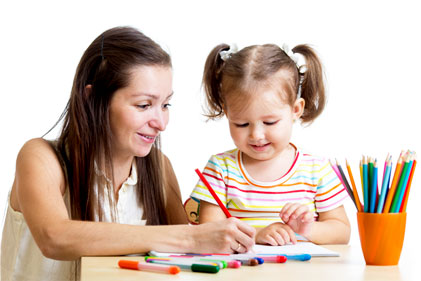A key feature of autism is difficulty with social skills. This can include understanding the emotions of others and the ability to understand empathy. The best tools we currently have are to begin to teach components of this skill. We start with understanding emotions and feelings. Later, we move to the skill of perspective taking. Perspective taking involves the ability to observe others, predict or understand that person’s behavior, or respond to the private thoughts and feelings of that person. These can be difficult skills to teach! They involve many components, but when successful, can lead to a greater understanding of empathy in your child.
Emotions
- Teach your child using pictures to simply label emotions.
- Use the addition of videos to provide a better understanding of what outward cues often come along with emotions. This can help them determine the emotion they see (e.g. tears, smile, gestures, etc.)
- Provide many examples of each emotion. The more they learn to respond to differences in the ways people show emotion, the more they will be able to identify those emotions in anyone they interact with.
- Once they have an understanding of identifying the emotions of others, start helping them label their own emotions in the moment. If they have difficulty with their own emotions, point out cues of their own expressions that they have successfully identified in others. A mirror could be very helpful!

Perspective Taking
- Once they are labeling emotions in others, have them label the public accompaniments to emotional responses (e.g. what does sad look like? What is a person doing when they are sad? – have tears, are crying, cover their face with their hands, etc.).
-
- These visible behaviors will help them evaluate what a person is feeling privately (the invisible part of emotions).
-
- Have the child discuss their own feelings: what makes them feel sad and how they feel when they are sad. Then you
 can begin to ask them what might make others feel sad and how that other person might be feeling when they are sad.
can begin to ask them what might make others feel sad and how that other person might be feeling when they are sad. - Teach the child to identify what another person is looking at. In other words, to follow another person’s gaze. This teaches the child, in a simple sense, to identify the world from another person’s perspective or view. For example: ask what is daddy looking at or what does daddy see? While their dad is clearly looking at one specific object.
-
- Use prompts such as arrows or pointing to help the child identify where another person is looking.
-
- Teach the child to label what others are experiencing through their senses; what are they seeing, hearing, smelling, tasting, or feeling?
-
- Show them a person experiencing a food or item through one of their senses and teach them to identify what the other person is experiencing.
- Have the other person hold more than one object so you can be sure that the child is not simply identifying that item. For example: holding and smelling a candle while also holding a piece of paper and asking, what am I smelling?
-
Teaching these skills may not always be successful, and that’s ok! It may take a lot of work, but you have the potential to improve your child’s social skills, help them have a better understanding of their own feelings, and understand the feelings of others.














